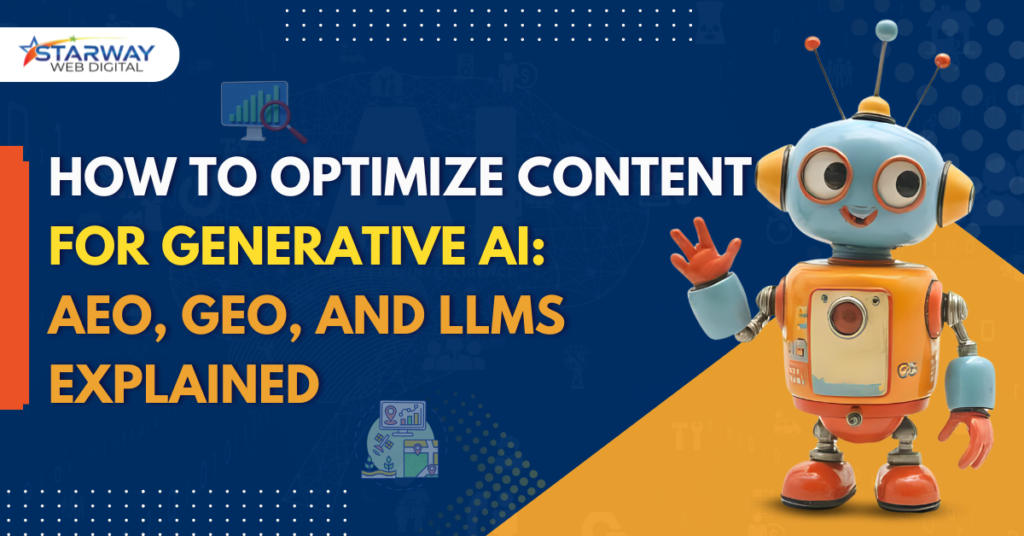How to Optimize Content for Generative AI: AEO, GEO, and LLMs Explained
The way people search has changed. Again. And this time, it’s not just a tweak to the algorithm — it’s a full-on evolution driven by Generative AI. If you want your content to stay visible, clickable, and relevant, you need to optimize content for generative AI using strategies built on AEO, GEO, and LLMs. At Starway Web Digital, we’ve been tracking this shift closely — and helping brands adapt their content strategies to keep pace with how AI interprets, ranks, and responds to user queries. What’s Really Changed in Search? Search engines are turning into answer engines. Instead of sending users to a bunch of blue links, tools like Google’s SGE (Search Generative Experience) and Bing’s AI summaries now generate direct, AI-powered answers right on the results page.That’s your competition now — not just the website next door, but the AI model summarizing your content. AEO: Answer Engine Optimization Answer Engine Optimization focuses on giving clear, concise answers that can be easily extracted by search engines and AI.To implement AEO: AEO is your ticket to being quoted in those rich AI summaries or featured snippets. GEO: Generative Engine Optimization Generative Engine Optimization is newer and even more disruptive. It’s the art of optimizing for generative engines, not just traditional ranking algorithms. These AI models don’t just crawl keywords — they synthesize ideas, scan context, and build summaries. How to optimize for GEO: If AEO helps you get picked, GEO helps you get quoted. LLMs: Large Language Models and Your Content At the core of both AEO and GEO is one thing: LLMs — the large language models like GPT, Claude, and Gemini that generate the answers people see. Optimizing for LLMs means: LLMs aren’t “ranking” your site — they’re interpreting and summarizing it. Speak their language. Quick Tips to Optimize Content for Generative AI Final Thoughts — Why This Matters for Your Business This shift is big — and it’s happening fast. Generative AI is rewriting how users interact with your content before they ever land on your site. If your content isn’t LLM-ready, it risks being overlooked or mistranslated by AI engines. That’s where Starway Web Digital comes in. We don’t just follow SEO trends — we engineer content strategies designed for AI-first environments. From optimizing for visibility in generative summaries to structuring your site for AI comprehension, we help your brand lead in this new search landscape.
How to Optimize Content for Generative AI: AEO, GEO, and LLMs Explained Read More »



